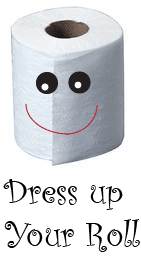
The Desperate Housewife’s Quilt – Block 7 Salt n Pepper
- Foundation Piecing ( Very addictive and therapeutic )
There will be two sections A and B.
Cutting
In each section there will be 4 small triangles. They are not quite 60 degree triangles but you will cut the pieces using a 60 degree triangle ruler.
- Small triangles A1, A2, A3, A4 and B1, B2, B3, B4 cut 60 triangles at the 2.75″ mark. This will give you plenty of coverage.
- A6 and B5 cut 2 triangles at the 5.25″ mark on the ruler
- A5, A9, B8, B9 cut 2 triangles at the 5.5″ mark on the ruler and cut them down the centre to yield 4 triangles.
- A7, A8, B6, B7 cut 2 triangles at the 5.5″mark on the ruler and cut in half to yield 4 triangles.
Foundation Piecing
Contrary to popular belief, foundation piecing is not hard. It only takes patience. I love this method because of the accuracy of the piecing and it allows me to make complex blocks without making templates. It is also a great stabiliser when dealing with multiple bias edges in a block.
I use standard A4 (letter) paper. Some people used specialised foundation paper, newspapers, freezer paper or interfacing. Which ever is your preference make sure it can be removed easily, won’t melt when ironed and will store well for long periods of time if you are not going to remove the foundation before storage.
My guidelines for foundation piecing are:
- Cut your pieces generously so you have plenty of fabric to cover the area.
- Fold on the printed lines to see where you have to place the fabric piece.
- Cut your seams back to 1/4″ as you go making sure that dark seams do not show outside the lighter seams.
- If possible, leave the foundation backing on the block when sewing them together. This will give you accurate seams if points and intersecting seams are abundant and keeps the block stable.
- Use a short stitch e.g 1.5. This will make the paper easier to tear.
Fold along the lines of the section you are going to sew. This will give you an idea of the area from the back.
Take pieces for A1 and A2 and pin them right side together on back of foundation covering the A1 section. Pin with a flat pin away from where you will sew. Turn over the foundation and using a short stitch ( 1.5 ), sew along the marked line.
Finger press open the seam. I use a wooden iron.
Fold back the paper and trim the seams to 1/4″.
Repeat this process for Section A and then continue to section B
When finished the block will look quite messy. Turn over to the paper side and trim, leaving the 1/4″ seam allowance.
Complete the two sections and sew together, pinning carefully and matching seam points.
Let’s play.
I have simplified the block for those that may want less piecing (Alternative Block found here).
 |
| Add triangles into the pattern |
Maybe tilt the block.
I hope you have all enjoyed this weeks block. Next week I bring you a very simple block using the fabrics as the feature. My guest block blogger will be Kelley from The Pioneer Quilter.
*** Please remember that these blocks and any blocks designed by guest bloggers should not be used for commercial purposes ( sold as a pattern, published etc) without the written consent of the owner ***
























4 Comments
ferne
This is such a creative use of a block! Amazing what can be done.
elliek
Love this block. I am foundation piecing "Just plain Nuts " at the moment and I use greaseproof paper as my foundation. Easy to tear away and very cheap.
Katie M.
Okay, how have I missed these!? These are great – thank You.
Jan
Love, love, love your fabrics and this block.